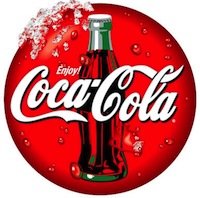 I love dividend paying stocks. They pay you to wait on their share prices to grow with dividends. A company’s dividend growth rate is a good proxy for how much their share price should also grow.
I love dividend paying stocks. They pay you to wait on their share prices to grow with dividends. A company’s dividend growth rate is a good proxy for how much their share price should also grow.
A company’s share price is the present value of all its future cash flows (dividends) according to classic finance theory. So, a simple way to look at it is that a company who is increasing its dividends by 3% to 5% each year should see its share price of its common stock growing at approximately the same rate.
An Example of the Dividend Growth Rate in Action
To give you an example, let’s look at one of my favorite companies, Coca-Cola (Stock Symbol: KO). In 2002, the Coca-Cola company issued a quarterly dividend of 10 cents or 40 cents per year (adjusted for the 2 for 1 stock split that took place in 2012). The share price of Coke at that time was right at about $50 (or $25 factoring the split). Over the past eleven years, Coca-Cola’s dividend has increased to 28 cents per quarter or $1.12 per year. That is a 9.8% annual increase in their dividend.
Currently, Coca-Cola’s stock price has risen to $39.23 this year. That actually equates to only a 4.2% annual rise in the price of their stock (stock split adjusted). Of course, that rise hasn’t been on a straight line but ebbs and flows with the macro economy as well. So, using this dividend growth rate and the share price, it is not out of line to say that Coca-Cola may be undervalued at these levels using this metric alone. Of course, it’s not always wise to put all of your investing eggs into the one basket of a single metric. There’s more to a stock price than that.
What Is Dividend Yield?
Dividend yield is a measure of the amount of cash flow you will receive from your investment. Dividend yield is typically measured as a percentage of your total investment.
To give you an example of how to calculate dividend yield, let’s say that your stock investment pays annual dividends of $1 per share and you bought it for $20 per share. That means that your stock’s dividend yield is 5% ($1 / $20).
One thing to consider though is that the share price of your stock rising will cause your dividend yield to drop. A company’s dividend won’t change as much as its share price might. If the stock price doubles to $40 per share, your dividend yield will drop to 2.5% ($1 / $40). The dividend itself hasn’t changed, but the share price and dividend yield sure have.
Too Much Dividend Yield May Be Bad Too
This very same dividend yield problem can have a similar and negative effect if the share price drops too much. You shouldn’t simply look for a stock with the highest yield of course. If a share price drops like a rock but the company still issues its same dividend, the yield will rise incredibly. This can be a serious red flag to investors.
A share price that dropped to $10 per share but still issues $1 annual dividend will result in a 10% dividend yield. So, a juicy dividend yield doesn’t always indicate a great stock. Be sure to find out why the yield looks so great.
Dividends provide compounding interest if you reinvest your dividends back into new shares of stock. When you get a dividend and immediately have the company or your stock brokerage firm reinvests it for you, you purchase additional shares of the stock. Then, you will receive even more dividends during the next quarter when the next round of dividends is issued. And, like compounding interest on your bank account, your dividends will earn their own dividends compounding year after year.
What about you? What’s your favorite metric to look for when you are searching for a new dividend stock to invest in? Is it dividend growth rate, dividend yield, or something else entirely? I’d love to hear your thoughts in the comment section below.
Disclaimer: I currently own shares of Coca-Cola and continue to purchase new shares every month through the company’s dividend reinvestment plan (DRIP) and dollar cost averaging.

3 Comments
In the past I have used the P/E ratio and the 5 year growth estimate.
Hello,
I have been reading several of you past articles and analysis and was wondering if you plan on posting any new blog posts soon. I love following and reading other dividend bloggers. Thanks for creating DP.
Hi there!
Nice post about yield and growth rate! Google “chowder rule” for an interesting metric that combines these two ideas.
I recently expanded my blogroll to a full page and added your site. Check it out:
http://divgro.blogspot.com/p/blogroll.html
Cheers
FerdiS